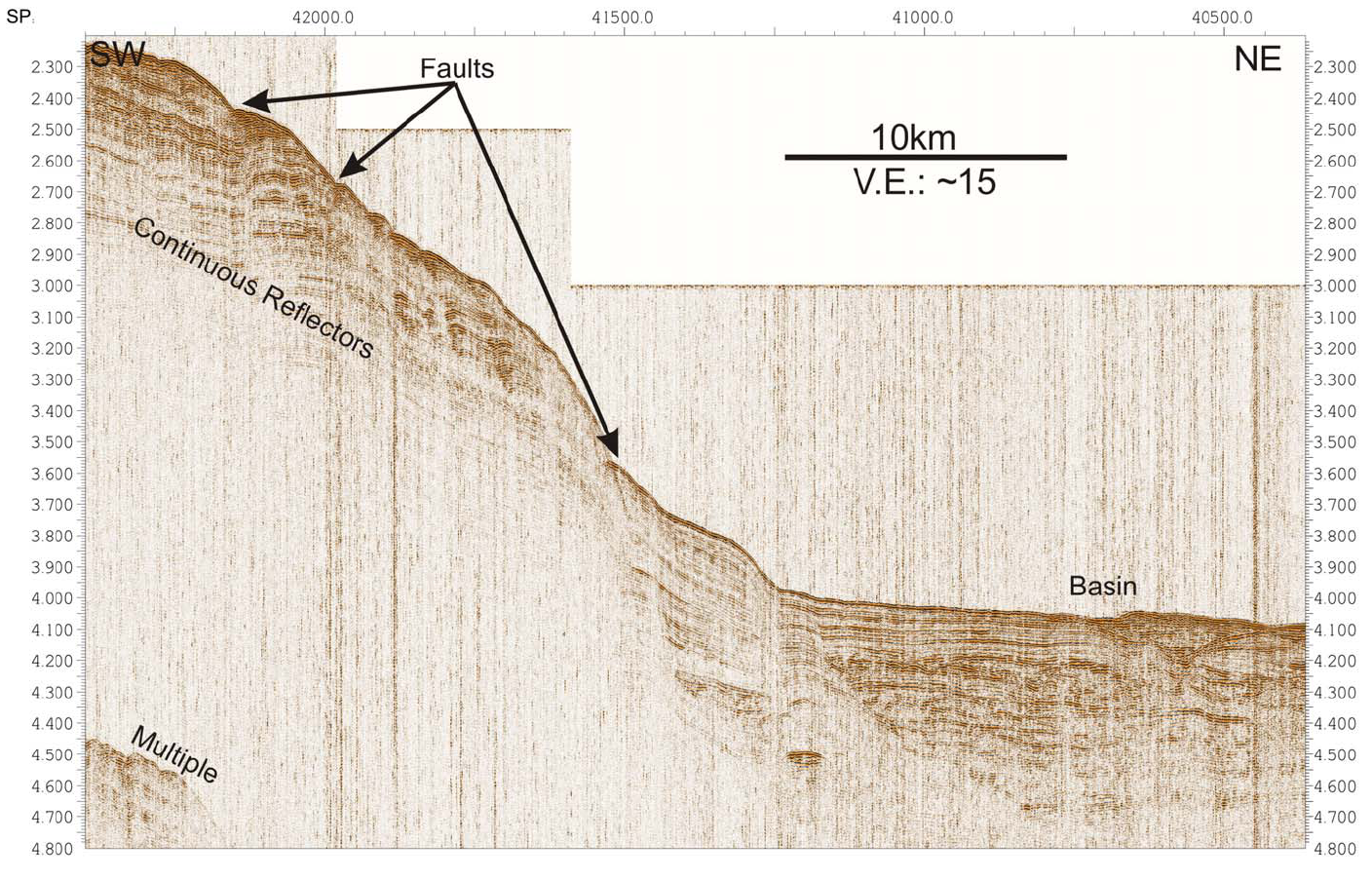2008 02 - R/V Meteor Cruise M75-2
07.02. - 24.02.2008 - Daressalam (Tanzania) - Durban (RSA)
Working Area: Tanzania
Chief Scientist: Dr. J. Pätzold
Chief Seismic: Dr. Sebastian Krastel-Gudegast
MTU participants: Dr. Keil, Meyer, Klages, Schlömer, Vogel
Groups involved
- Working Group Marine Technology/Environmental Research, Department of Geoscience, Bremen University (GeoB AG Spiess (MTU))
- MARUM...
Instrumentation
- mini GI Gun 2 x 0.25 L + GI Gun 2 x 1.7 L (Generator-Injector; Sodera)
- Syntron Streamer 350 m, 56 channels, 6.25 m groups with 13 hydrophones
- MaMuCS Recording System, 96 channels (Keil)
- Multibeam System Hydrosweep DS 15.5 kHz - Atlas Elektronik
- Parasound Sediment Echosounder 18/4 kHz - Atlas Elektronik
- ParaDigMA Digital Acquisition for Parasound
- METEOR compressor was not delivered, and a smaller compressor E&Je with 2 L/min @150 bar was was transported via airfreight and unsed from Feb 14th onwards.
- Due to this delay at the beginning of the cruise and the early end of the cruise, seismic surveying was significantly shortened compared to the proposed seismic work.
The east African continental margin off Tanzania and Kenya was the target of a research cruise carried out by the MARUM – Center for Marine Environmental Change at the University of Bremen within the DFG-Research Center / Excellence Cluster The Ocean in the Earth System”. The research is directed towards a better understanding of paleoclimatological changes, sedimentation processes and coastal dynamics. The paleoceanographic and paleoclimatic studies will deal with the role of the tropical Indian Ocean in the climate system during the late Quaternary.
The role of the tropical Indian Ocean in the Earth´s climate system is not well understood. Recent studies show that a major part of climate variability in the Indian Ocean is induced by internal ocean-atmosphere couplings. These influence the wind regime, sea-surface temperatures, and precipitation on the surrounding continents. The teleconnections indicate that the Indian Ocean plays a more important role in global climate than was previously assumed. In comparison to other oceanic regions there is only limited information on the paloeoclimatic changes in the western tropical Indian Ocean. Earlier paleoceanographic studies have mainly concentrated on the northwestern and northeast Indian Ocean.  These revealed that close climatic teleconnections exist to the north Atlantic realm. The monsoon system of the Indian Ocean has important economic and cultural impacts on large areas of Africa and Asia. Paleoreconstructions reveal a more intensified SW monsoon during interglacial periods and an enhanced NE monsoon during glacial periods. Abrupt changes and variability also occurred on millennial and submillennial scales. They occurred in phase with climatic changes in the North Atlantic (Dansgaard-Oeschger cycles and Heinrich events).
These revealed that close climatic teleconnections exist to the north Atlantic realm. The monsoon system of the Indian Ocean has important economic and cultural impacts on large areas of Africa and Asia. Paleoreconstructions reveal a more intensified SW monsoon during interglacial periods and an enhanced NE monsoon during glacial periods. Abrupt changes and variability also occurred on millennial and submillennial scales. They occurred in phase with climatic changes in the North Atlantic (Dansgaard-Oeschger cycles and Heinrich events).
New information on the role of the tropical Indian Ocean is needed to better understand these climatic teleconnections and the role of the tropical Indian Ocean in the climate system. There is only limited information about changes in surface-water, intermediate-water, and deep-water masses in the western tropical Indian Ocean over the periods of interglacial and glacial times. The major goal of the second cruise leg was to obtain data and sample material from the East African continental slope. It was anticipated that the research area will provide important information on paleoclimatological and paleoceanographic changes that occurred in the western tropical Indian Ocean.
M.Sc. Theses
Meyer, Matthias – 2008 - Akustische Klassifizierung sedimentärer Strukturen am Kontinentalhang vor Süd-Tansania
